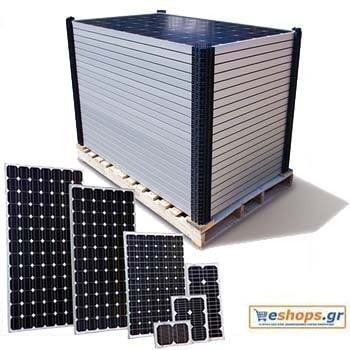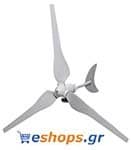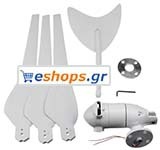Πως να επιλέξω φωτοβολταϊκό σύστημα διασυνδεδεμένο

φωτοβολταικα-χονδρικη-photovoltaics-wholesale-europe-greece- Πως να επιλέξω φωτοβολταϊκό σύστημα διασυνδεδεμένο
Πως να επιλέξω φωτοβολταϊκό σύστημα διασυνδεδεμένο: Σε αυτό το ιστολόγιο, ρίχνουμε μια εις βάθος ματιά στα συνδεδεμένα ηλιακά φωτοβολταϊκά συστήματα. Πρόκειται για συστήματα ηλιακής ενέργειας που συνδέονται με το ηλεκτρικό δίκτυο – και λειτουργούν χωρίς εξοπλισμό εφεδρικής μπαταρίας.
Οι περισσότεροι που έχουν ηλιακά πάνελ εγκατεστημένα στις στέγες τους έχουν ένα ηλιακό σύστημα συνδεδεμένο με πλέγμα και παρά τις πρόσφατες βελτιώσεις στην τεχνολογία της μπαταρίας, το πλέγμα παραμένει η πιο δημοφιλής επιλογή για τους ιδιοκτήτες σπιτιού που πηγαίνουν ηλιακή σήμερα.
Εάν δεν είστε εξοικειωμένοι με τον τρόπο λειτουργίας αυτών των συστημάτων, ρίξτε μια ματιά σε αυτό το σύντομο βίντεο που δείχνει ηλιακούς συλλέκτες συνδεδεμένους με πλέγμα σε δράση για ένα τυπικό αμερικανικό σπίτι.
Αν αναζητάτε μια πιο λεπτομερή εξήγηση για το τι είναι ένα ηλιακό σύστημα συνδεδεμένο με πλέγμα, φροντίστε να διαβάσετε ολόκληρο αυτό το blog! Εξηγούμε πώς λειτουργούν τα συνδεδεμένα ηλιακά φωτοβολταϊκά συστήματα πλέγματος – και αν είναι ο σωστός τύπος συστήματος ηλιακών φωτοβολταϊκών πάνελ για εσάς.
Μια γρήγορη σημείωση: Αυτός ο τύπος συστήματος είναι επίσης γνωστός με πολλά άλλα ονόματα, όπως «on-grid», «grid-connect (ed)», «grid-intertied» και «grid-direct» ηλιακά φωτοβολταϊκά συστήματα. Όλοι αναφέρονται στο ίδιο πράγμα.
Πως να επιλέξω φωτοβολταϊκό σύστημα διασυνδεδεμένο:
Τι είναι το ηλιακό σύστημα που συνδέεται με το δίκτυο;
Όλα τα φωτοβολταϊκά (PV) συστήματα ηλιακής ενέργειας παράγουν ισχύ με τον ίδιο τρόπο: χρησιμοποιώντας ηλιακούς συλλέκτες για τη μετατροπή του ηλιακού φωτός σε συνεχές ρεύμα. Λοιπόν, τι διαφοροποιεί τα ηλιακά φωτοβολταϊκά συστήματα που συνδέονται με το δίκτυο;
Τα ηλιακά φωτοβολταϊκά συστήματα που συνδέονται με πλέγμα συνδέονται στο πλέγμα κοινής ωφέλειας μέσω ενός μετατροπέα σύνδεσης . Ο μετατροπέας πλέγματος επιτρέπει την αμφίδρομη μεταφορά ισχύος μεταξύ του ηλιακού συστήματος του σπιτιού και του δικτύου.
Δεν περιλαμβάνουν αποθήκευση μπαταρίας – αντ ‘αυτού χρησιμοποιούν το πλέγμα ως μπαταρία.
Αυτό σημαίνει ότι όταν ένα συνδεδεμένο σύστημα παράγει περισσότερη ισχύ από τις οικιακές ανάγκες, η πλεονάζουσα ισχύς δεν χάνεται. Το σύστημα χρησιμοποιεί τη σύνδεσή του στο δίκτυο για να εξάγει την πλεονάζουσα ισχύ στο βοηθητικό πρόγραμμα.
Σημαίνει επίσης ότι το σπίτι δεν εξαντλείται. Όταν τα ηλιακά πάνελ δεν παράγουν αρκετή ηλεκτρική ενέργεια, το σύστημα μπορεί να εισαγάγει το έλλειμμα από το δίκτυο.
Το φως του ήλιου χτυπά τα πάνελ, η ενέργεια ρέει στη συνέχεια στο μετατροπέα, στη συνέχεια στο σπίτι, και στη συνέχεια στο δίκτυο.
Μια απεικόνιση του τρόπου λειτουργίας ενός συνδεδεμένου ηλιακού συστήματος. Η παραγόμενη ηλιακή ενέργεια χρησιμοποιείται για την τροφοδοσία του σπιτιού. Στη συνέχεια, η πλεονάζουσα ισχύς εξάγεται στο δίκτυο ηλεκτρικής ενέργειας. Πηγή εικόνας: PH Ανανεώσιμες πηγές
Η αμφίδρομη σχέση ενός συνδεδεμένου συστήματος με το δίκτυο προσφέρει στους ιδιοκτήτες σπιτιού ένα μεγάλο όφελος: μπορούν να το χρησιμοποιήσουν για να επωφεληθούν από τη μέτρηση δικτύου
Όπου είναι διαθέσιμο, η καθαρή μέτρηση επιτρέπει στους ιδιοκτήτες σπιτιού να κερδίζουν πιστώσεις λογαριασμού για κάθε watt περίσσειας ηλιακής ενέργειας που στέλνουν πίσω στο δίκτυο. Αυτές οι «πληρωμές» επιτρέπουν στον ιδιοκτήτη σπιτιού να μειώσει δραστικά ή ακόμη και να εξαλείψει τις χρεώσεις χρήσης τους.
Δείτε την κατανομή της καθαρής μέτρησης για να μάθετε περισσότερα σχετικά με αυτό το δημοφιλές κίνητρο.
Δείτε πόσο μπορεί να σας εξοικονομήσει ετησίως ένα συνδεδεμένο ηλιακό σύστημα
93305
Ποιοι άλλοι τύποι εγκαταστάσεων ηλιακού συστήματος υπάρχουν;
Οι οικιακές ηλιακές εγκαταστάσεις που δεν είναι συνδεδεμένα στο δίκτυο ηλιακά φωτοβολταϊκά συστήματα θα εμπίπτουν σε μία από αυτές τις δύο κατηγορίες:
Υβριδικό ηλιακό σύστημα (γνωστό και ως σύστημα συνδεδεμένο στο δίκτυο με εφεδρική μπαταρία)
Τα υβριδικά συστήματα περιλαμβάνουν μια λύση αποθήκευσης μπαταρίας όπως το Tesla Powerwall , το LG Chem Resu ή το Sonnen ecoBatterie , ενώ παραμένουν συνδεδεμένα στο δίκτυο ηλεκτρικής ενέργειας.
Η προσθήκη ενός συστήματος μπαταρίας μπορεί να μην ακούγεται πολύ, αλλά κάνει τα υβριδικά ηλιακά φωτοβολταϊκά συστήματα να λειτουργούν διαφορετικά – και να κοστίζουν πολύ περισσότερο – από τα συνδεδεμένα με το δίκτυο ηλιακά φωτοβολταϊκά συστήματα.
Ηλιακό σύστημα εκτός δικτύου
Πρόκειται για ένα σύστημα ηλιακής ενέργειας που λειτουργεί εντελώς ανεξάρτητα από το δίκτυο. Δεδομένου ότι δεν υπάρχει δυνατότητα λήψης ισχύος από το βοηθητικό πρόγραμμα, τέτοιες ρυθμίσεις απαιτούν πολύ μεγαλύτερο αριθμό πάνελ, σε συνδυασμό με σημαντική αποθήκευση μπαταρίας.
Εξετάζουμε τα πλεονεκτήματα και τα μειονεκτήματα της off-grid solar σε αυτό το blog .
Τώρα, ας επιστρέψουμε στα συνδεδεμένα ηλιακά πάνελ και να δούμε τι είναι υπέροχο γι ‘αυτά – και τι όχι.
Πλεονεκτήματα των συνδεδεμένων ηλιακών φωτοβολταϊκών συστημάτων
Ακολουθεί μια γρήγορη μείωση των πλεονεκτημάτων των ηλιακών φωτοβολταϊκών συλλεκτών που είναι συνδεδεμένα με πλέγμα:
Φθηνότερος τύπος συστήματος ηλιακών φωτοβολταϊκών συλλεκτών : Αυτό το σύστημα απαιτεί τη μικρότερη ποσότητα εξοπλισμού και διαθέτει την απλούστερη εγκατάσταση
Μεγαλύτερη εξοικονόμηση : Πώληση ηλεκτρικής ενέργειας πίσω στο δίκτυο για εξάλειψη του κόστους σας – ειδικά με καθαρή μέτρηση
Πιο αξιόπιστο από άλλες φωτοβολταϊκές ρυθμίσεις : Καθώς απαιτεί τη μικρότερη ποσότητα εξοπλισμού, ένα ηλιακό σύστημα συνδεδεμένο με πλέγμα έχει τα λιγότερα σημεία πιθανής αστοχίας
Μειονεκτήματα συνδεδεμένων ηλιακών φωτοβολταϊκών συστημάτων
Υπάρχει πραγματικά ένα μόνο μειονέκτημα για ένα σύστημα συνδεδεμένο στο δίκτυο:


